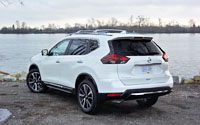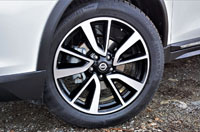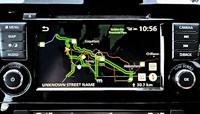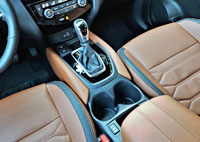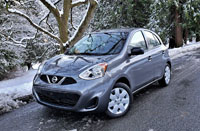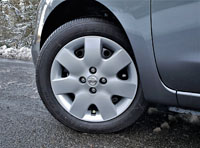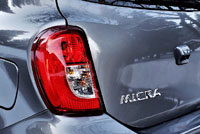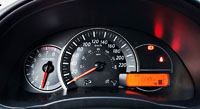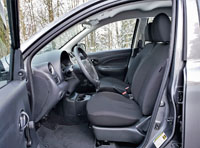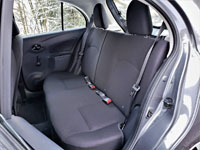
What’s the best-selling electric car of all time? That’s actually a pretty cut and dry question, but nevertheless it gets debated more often than it should be.
Some point to Tesla that’s made massive inroads into the EV market in recent years, but while the brand has racked up plenty of overall sales, no individual model has yet come out on top. Since the first Tesla Roadster went on sale in 2012 and calendar year 2018 came to a close on December 31, the U.S. all-electric brand had sold an approximate total of 532,000 units, which far and away makes it the most successful electric car producer, but despite reportedly receiving 325,000 reservations of the Model 3 after only a week of being unveiled in 2016, and that waiting list having grown to 455,000 units by August of 2017, the car’s actual deliveries hadn’t exceeded 238,000 by April 21, 2019, which while impressive for any startup automaker, is still far behind the real EV sales leader, Nissan and its much more plentiful Leaf.
Before we receive a slew of “What about the Toyota Prius?” questions in our inbox, take note the Prius isn’t really a full electric vehicle, but rather a hybrid that still relies on a regular gasoline-powered internal combustion engine (ICE) to get where it’s going.
Unlike a full EV, the Prius’ battery and electric motor supplements the ICE’s motive power, and can only be used for 100-percent electric mobility at low speeds (under 20 km/h) and short distances (such as in public parking garages). Toyota now produces a plug-in hybrid model named Prius Prime, which provides longer distances of all-electric use at higher speeds, but it hasn’t sold very strongly so far.
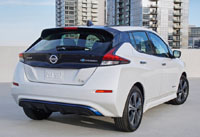
Alternatively, Nissan’s Leaf is a pure electric vehicle that totally relies on its battery and electric motor for motive power, so therefore needs to be regularly recharged from a home or public charging station, instead of refueled at a gas station like the Prius and other hybrids. Where the two iconic green cars enjoy similarities, however, is in their best-selling status, the Prius as the all-time leader amongst hybrid-electric vehicles (HEVs) and the Leaf as the undisputed electric vehicle (EV) champion. And yes, if you were wondering when we’d get to the Leaf’s total sales number, Nissan has sold and delivered more than 390,000 Leaf hatchbacks since it became available in 2010.
Making sure it maintains its leadership, Nissan now offers the 2019 Leaf with two power units, both of which are more formidable than the single battery/motor combination provided with last year’s model. As part of the 2019 model upgrade introduced halfway through 2018, Nissan gave its Leaf a new 40kWh Li-ion battery and uprated 110-kW (147-horsepower) electric motor, which was a 16kWh improvement over the old version. This meant that it could (and still can) travel up to 243 kilometres on a single charge compared to only 172 km with the previous model, a 69-km increase that made all the difference in the world. Still, not willing to rest on its laurels, the new Leaf Plus connects a 62-kWh battery to a 160 kW (214 hp) electric motor for an estimated 363-km of range.
“With the addition of LEAF PLUS, the Nissan LEAF is now available with two battery options and a choice of four trim levels – each featuring the many advanced technologies offered under the banner of Nissan Intelligent Mobility,” commented Steve Rhind, director of marketing, Nissan Canada Inc. in a press release.

To be clear, starting this April the 2019 Leaf is available in four trims instead of just three, but two of its previous trims are no longer available. The new base trim is the $40,698 Leaf SV, which is now followed by the $43,998 Leaf S Plus, the $46,598 Leaf SV Plus, and finally the $49,498 Leaf SL Plus, with a $1,950 destination charge added to all models.
The new base price is therefore $3,900 more expensive than the outgoing version, but this is due to the cancellation of regular Leaf S trim, which was priced at $36,798 through the last half of 2018 and calendar year 2019 thus far. What’s more, the regular Leaf SL, which added luxury features such as two-tone black and grey perforated leather and microfibre-like Bio Suede PET cloth upholstery, an Intelligent Around View Monitor, Driver Attention Alert, seven-speaker Bose premium audio, turn signal repeaters integrated within the side mirror caps, and more for $42,698, will no longer be available for order in Canada either (they’re both still offered in the U.S.), but you may be able to locate one or the other at a Nissan retailer.
Comparing apples to apples, the price difference between the regular Nissan Leaf and new Leaf Plus in SV trim, which are mostly similar, is $5,900, but take note that along with increased performance, 120 km (or about 50-percent) or so of added range, and an enhanced recharging system (keep reading), the Leaf Plus SV also includes a slightly reworked front fascia featuring special blue highlights, an “e+” logo plate on the lower portion of the charge port lid, and new rear badging (depending on trim level), while other standard enhancements include forward collision warning, Rear Door Alert (which warns if someone or something has been left in the rear seating area), and a 1.0-inch larger 8.0-inch centre touchscreen (a 7.0-inch touchscreen is standard and the old base 5.0-inch display has been discontinued).

Also notable, the infotainment systems found in both regular Leaf SV and Leaf S Plus base models now come standard with a navigation system, Apple CarPlay and Android Auto smartphone connectivity, satellite radio, etcetera, but only SV trims provide voice recognition, NissanConnect EV (that remotely connects the car to your smartphone), six audio speakers (instead of four), and more.
Additionally, the $3,300 more affordable Leaf SV adds 17-inch alloy wheels instead of the 16-inch alloys that come standard on the Leaf S Plus, as well as fog lights, an electronic parking brake (in place of a foot-operated parking brake), an auto-dimming centre mirror, a Homelink universal garage door opener, an eight-way power driver’s seat with two-way lumbar, a tonneau cover, and a bevy of advanced driver assistance features such as autonomous emergency braking with pedestrian detection (which basically includes the SV Plus model’s forward collision warning), auto high beams, dynamic cruise control with full speed range and hold, ProPilot Assist semi-autonomous self-driving, Steering Assist, blindspot warning, lane keeping assist, rear cross-traffic alert, and more.
The menu of items just mentioned is also standard with the new Leaf SV Plus, while a shorter list of luxury features spoken of earlier in this story, when covering the now outgoing Leaf SL, is also pulled up to the new Leaf SL Plus model, albeit with a big $6,800 difference in price thanks to its performance and driving distance enhancements.
Now is probably an apropos opportunity to explain that plenty of electric vehicle owners consider range performance similarly to how conventional car buyers may be willing to ante up more for faster acceleration and better all-round handling. No matter which way you look at it, the two different Leaf models ensure “that there’s a Nissan LEAF to meet the driving needs of a wider range of customers,” as said in a press release.

Speaking of those who just want to take off a little quicker, despite weighing in at 1,737 kilograms (3,831 lbs) compared to 1,580 kg (3,483 lbs), the new Leaf Plus reduces sprint times by 13 percent over the regular Leaf, which will let its drivers “confidently pass slower-moving vehicles, exit corners faster and more seamlessly, and merge easily with fast-moving traffic,” says Nissan. Additionally, Nissan has given the new Leaf Plus and extra 10 percent more top speed, with more “comfortable cruising” capability being the target.
This being an electric vehicle, faster charging times will be an even greater reason to opt for the new Leaf Plus. Along with all the other upgrades, its new standard 100kW-capacity quick charging system allow for an 80-percent recharge within just 45 minutes (as per the Nissan Canada retail website). If the only option is a 75-kW DC quick charger it will only take another 5 minutes for a total of 50 minutes in order to reach that 80-percent goal, or alternatively 60 minutes is what’s needed when using a 50-kW DC quick charger. Of note, the regular Leaf requires approximately 40 minutes to achieve the same 80-percent charge with the 50-kW DC quick charger, but be forewarned that you can’t connect it to the 75-kW or 100-kW DC fast charging stations.
If you’ve already set up a regular 240-volt home charging station, the new Leaf Plus will require about 11.5 hours to fully charge, or approximately 3 and a half hours longer than the regular Leaf. Also, the Leaf Plus can be driven for about 35 km after about an hour on the same 240-volt charger, which is good to know if you just want to top it up while visiting the mall.
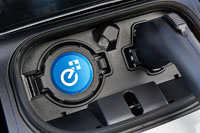
While not filling up at a traditional pump it’s always important to remember that EVs use resources, and to that end both Leaf models are ultra-efficient, with energy equivalent ratings of 1.9 Le/100km city and 2.4 highway for the regular Leaf, or 2.1 Le/100km city and 2.5 highway for the new Leaf Plus. Litres of gasoline are never part of the equation, of course, but rather the Le/100km rating system can be a helpful tool in understanding how electric vehicles’ energy consumption compares to the fuel economy of gasoline-powered vehicles, not to mention how each EV’s energy use compares to the other.
What’s more, it’s important to note that the new Leaf Plus’ battery doesn’t impinge on interior packaging at all, with both front and rear seating compartments identically sized for comfortable accommodations all-round, plus cargo volume still capable of being loading up with 668 litres (23.6 cubic feet) of gear when its rear seats are in use, and 849 litres (30.0 cubic feet) when the standard 60/40 split-folding seatbacks are lowered.
So now that you know all that’s changing with the Leaf halfway through its 2019 model year, you may want to take advantage of the savings still available if you’d rather opt for the less powerful regular model, whether choosing non-Plus versions of the base Leaf S or top-line Leaf SL, because there are still some available at Canadian Nissan retailers (depending on your area). This said, if you’d rather pay more for quicker charging, added range, and improved straight-line performance, the all-new Leaf Plus is already starting to show up at those same dealers.
To find out more about all the available 2019 Nissan Leaf and 2019 Leaf Plus trims, packages and options, including pricing for each, and/or to learn out about any of the rebates potentially available, not to mention dealer invoice pricing that might just save you thousands, be sure to visit this page right here on CarCostCanada.
Story credits: Trevor Hofmann
Photo credits: Nissan


